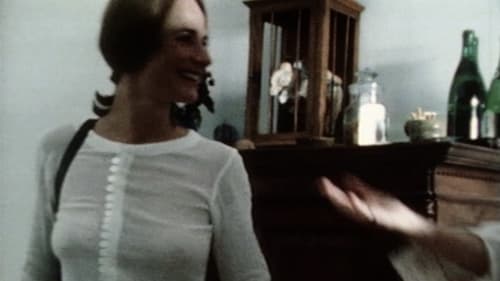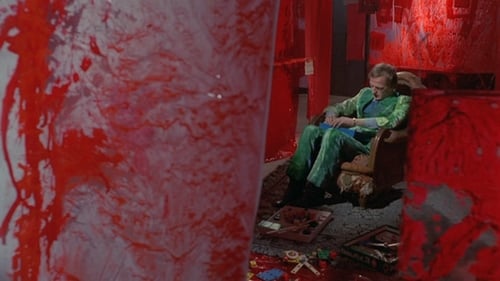
Music
Действие фильма происходит в Москве в 1953 году в доме, что стоит на проезде Серова. Там живет 12-летняя девочка Таня, которая в этом году не уехала в летний лагерь. И в этот дом возвращается из дальней магаданской ссылки семья мальчика Мити. Он рассказывает Тане, что там, откуда приехала его семья, осталась любимая собака по кличке Гектор. Таня и Митя делают все, чтобы вернуть Гектора в Москву, а в ходе поисков всех возможных вариантов, узнают тайны семьи Митьки.

Music
Troubled teen Lisa can't seem to find the joy in everyday things. Lashing out desperately, she falls in love with her mother's junkie boyfriend, which can't end well.

Music
Life of an ordinary fisherman changes when a young mai-mai fish sees him and falls in love!... Set to original music by composer Gavin Bryars, the film tells a romantic story of the transforming power of love - even without a happy ending.

Himself
A history of the work of Merce Cunningham.

Robert Wilson and the Civil Wars is an in-depth documentation of Robert Wilson’s ambitious attempt to stage an epic, twelve-hour, multinational opera for the 1984 Summer Olympics. Filmmaker Howard Brookner follows the avant-garde theatre director as he confronts a hectic work schedule, funding difficulties and relentless international travel in attempt to complete his preparations. The film examines Wilson’s unique theatrical style during The Civil Wars: A Tree Is Best Measured When It Is Down, which involves the continual creation of evocative stage sets, owing to a unique juxtaposition of movement, sound, text and image. Known for his precise, painterly images Wilson’s work derives more from visual art than the orthodox literary traditions of theatre. As a result, Wilson often challenges actors to perform in a boldly minimalist style, as well as collaborating with non-actors, such as young autistic poet Christopher Knowles in Einstein on the Beach.

Music
For this remarkable experimental film, the provocative avant-garde legend Stephen Dwoskin gathered together a group of strangers and filmed them as they explored their fantasies over a period of five days: a project that now sounds a little like TV's Big Brother. The ceremonial gowns and make-up here not only evoke the eroticism of European horror movies but also highlight the film's interplay between performance and intimacy. Jonas Mekas called it 'theatre of life'.

Music
Described by Stephen Dwoskin as "a documentary without being one," the basis of BEHINDERT is autobiographical: the story of a physically disabled man and a physically normal woman- played by Dwoskin (who has a post-polio disability) and Carola Regnier- who confront the difficulties of a relationship. The two were no longer a couple at the time Dwoskin made the film, yet it burns with the passion and intensity of true love.

Music
Botticelli's Venus emerges from the waters, that of Yvan Lagrange, is she shipwrecked?...

Music
Evolves around the rooms of a house as one of the main characters, Lisiska, is waiting and is studied in depth as she prepares herself for a meeting. The film attempts to display sexual barriers and misconceptions, and about the role-playing and the confusion around the whole question of sexual and sensual involvement. The essence is the confrontation with self-deception, lies and the real fear of contact with both sexes.

Music
A man walks towards the camera down the end of a street to the sound of 'Jesus’ Blood Never Failed Me Yet', a composition by Gavin Bryars based on a loop of an anonymous homeless man singing the song. The man’s voice is progressively intensified by an instrumental accompaniment, which increases in density and richness, before the whole thing gradually fades out. Dwoskin’s film was produced to be shown during the premiere of Jesus' Blood Never Failed Me Yet at the Queen Elizabeth Hall, London in December 1972. For Dwoskin, it represents “… the singing voice of the last days of a London drunk (anonymous) as the orchestra raises him to heaven. The faint ghost image of a figure swims gradually to you through the grains of film low light…”

Music
'Dyn Amo' is a 'drama' exploring the distinction between a person's self and his projection of that self to others; and it's a 'horror movie' tragically suggesting how a projection can become more substantial than the self behind it. Its subjects are role-playing (especially sexual role-playing), and the masochism of playing a role that conforms to others' exploitative interests.

Original Music Composer
A surreal and disturbing distillation of Western Civilization, Necropolis is the unhinged vision of Italian director Franco Brocani. Pierre Clémenti is Attila the Hun, naked and on horseback, while Warhol superstar Viva is a drunken and abusive Countess Bathory. A pop pastiche for the psychedelic generation, Necropolis features a soundtrack by Gavin Bryars.

Music
A sexually frustrated man complies with the emotional and erotic wishes of four women, but afterwards he is left even lonelier than before.

Sound
Trixi is Dwoskin’s most convulsive version of his recurrent theme: the confrontation of a solitary girl with the camera. Shot in one continuous 8-hour session. Trixi records Beatrice Cordua’s responses to the situation, from initial shyness, fear and withdrawal through teasing and posturing to naked surrender and final exhaustion …. The camera is highly mobile; often confronting the girl in extreme close-ups, sometimes swooping down from overhead, sometimes searching to “recapture” her …. The camera itself is the object of erotic desire, [in] the sense of giving a performance shifting imperceptibly in a helpless self-exposure in response to its constant stare. Clearly, the form of the film was dictated by the response of the performer. Beatrice Cordua proves Dwoskin’s most expressive subject to date, and the film is correspondingly “open,” the camera having been willing to choose its tactics as direct responses.

Music
Trixi is Dwoskin’s most convulsive version of his recurrent theme: the confrontation of a solitary girl with the camera. Shot in one continuous 8-hour session. Trixi records Beatrice Cordua’s responses to the situation, from initial shyness, fear and withdrawal through teasing and posturing to naked surrender and final exhaustion …. The camera is highly mobile; often confronting the girl in extreme close-ups, sometimes swooping down from overhead, sometimes searching to “recapture” her …. The camera itself is the object of erotic desire, [in] the sense of giving a performance shifting imperceptibly in a helpless self-exposure in response to its constant stare. Clearly, the form of the film was dictated by the response of the performer. Beatrice Cordua proves Dwoskin’s most expressive subject to date, and the film is correspondingly “open,” the camera having been willing to choose its tactics as direct responses.

Music
Filmed in New York in 1964, completed in London 1967.

Music
В Москву из-за границы приезжает известный театральный режиссер Даниил Сорин, приглашенный восстановить свой некогда успешный спектакль «Вишневый сад». Все идет неплохо - вновь вспыхивает чувство к интересной актрисе, а каждая красотка добивается от него главной роли. Но случается странное: он обнаруживает надгробный памятник самому себе, где дата смерти совпадает с датой предполагаемой премьеры. Что это? Злой розыгрыш, роковое стечение обстоятельств, видения, а может, на него и правда готовится покушение?













